ERCUMENT KILIC
Ana Menü
- ANA SAYFA
- HAKKIMDA
- ABD VE DÜNYADA TANITIM VE LOBİCİLİK ÇALIŞMALARI
- TÜRK DÜNYASI TANITIM ve LOBİCİLİK ÇALIŞMALARIM
- SÖZDE SOYKIRIMI ÜZERİNE LOBİCİLİK ÇALIŞMALARIM
-
ABD VE DÜNYADA TÜRK KÜLTÜRÜ TANITIM ÇALIŞMALARI
- MÜZİSYEN ERCÜMENT KILIÇ
- DÜNYADA TÜRK DANSLARI TANITIM
TÜRK HALK DANSLARI YÖRELERİ
Turkish Folk Dances by Ercument KILIC
Studying the culture and folklore of Turks, we can not limit ourselves to the borders of today's Turkey.
Turks have a proud cultural history that started out in the steppes of central Asia, and at the height of the Ottoman Empire, spread all the way to The Balkans; not to mention the Asia Minor" and most of Arabia.
The regions taken into consideration here are eightyo ne provinces of Turkey, Azerbaijan, and a small part of the Balkans;
All of these regions can be divided into eight dance categories: HORA, ZEYBEK, KASIK, TEKE, HALAY, HORON, BAR and AZERI.
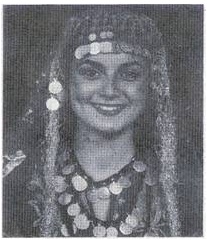
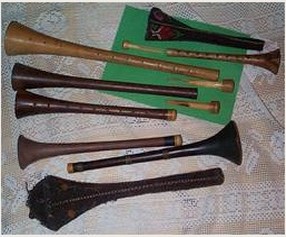
Headdress of a folkdancer Some of the musical instruments
Since it is rather impossible in a short article such as this to articulate on all the songs, sayings, dances, costumes and musical instruments of all these regions, I will give the reader a glimpse into some of these categories. "
HORA REGION:
HORA; Edirne, Kirklareli, Tekirdag province and Uskup.
Out of the four regions listed under HORA, Uskup is the one which is most intriging due to the fact that it does no longer lies within the borders of Turkey. Known to the Westerners as Skopia, Uskup is a city of 650,000 in Yugoslavia, majority of residents of which are Turks.
Uskup, with. its culture havily influenced by, theTurks since 1389, with all of its music, dances, costumes and local customes display an all-
Dances of Uskup can be performed as line or couple dances. The basic costuming for the men is: A white, .long_sleeve, button-
Womens' costume consists o a long-
ZEYBEK REGION:
ZEYBEK: Aydin, Balikesir, Kutahya, Izmir, Mugla, Usak, Manisa, Cankiri, Ankara provices,
Zeybeks are Brave mountaineers who live in western Turkey area such as lzmir etc. This type of western folkdance has 9/8 tempo counted in music:3/4 plus 3/8.
The main instruments of this type of dance are.: darbuka (hour-
The Zeybek dancer is instantly recognized by the odd-
In western Turkey, this dance is still very popular and is important part of the cultural and social life of the people. The difficult part of this dance is taught and handed down from generation to generation.
TEKE REGION:
TEKE: Burdur, Isparta, Antalya, Muğla, Fethiye provices.
Widely used in this area are sipsi, vulum (bagpipe) and Kabak kemane.
Sipsi: This, in some other regions is called "coban dudugu" (a shephard's whistle). Its length is approximately is six to eight inches, and is made from bamboo of quarter-
Tulum: This Turkish bagpipe is basically a half of a goat skin. The remainder of the goat skin, consists of one-
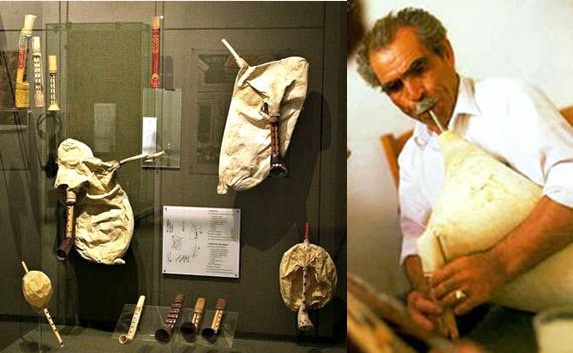
Certain other regions of Turkey recognizes tulum as culum zurna, gayda, Kayda. Gayda and Kayda, both of which meaning the same depending on the Turkish, dialect, is derived from the word “kaide;” meaning the rule-
Kabak Kemane:This Iklig of central Asian Turks, and kemenche of Azerbaijani-
KASIK REGION:
KASIK: Bursa, Bilecik, Eskisehir, Bolu, Kastamonu, Kirsehir, Konya, Silifke provices.
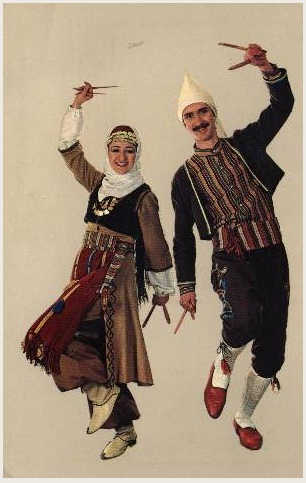
Kasik means "spoon" in Turkey is a widely used rhythm and dance instrument in Turkey and are an integral part of the styling of this region. Men and women click the rhythm of the dance with .a pair of wooden spoons in each hand. This type of dance symbolizes the every-
Some of the most
In "Silifke'nin Yogurdu", the dancers immitate the acts involved in yogurt making, and in "Keklik", they skip and hop with the footwork and .sway arms wildly on sides, come to a sudden stop and seeds and then suddenly start flying again.
HALAY REGION:
HALAY: Corum, Yozgat, Amasya, Tokat, Sivas, Malatya, Gumushane Elazig, Bingol, Adana, Gazi Antep, Sanli Urfa, Adiyaman, Diyarbakir, Mardin, Siirt, Bitlis, Mus, Erzincan, Kars (partial), Van, Tunceli, Bayburt provices.
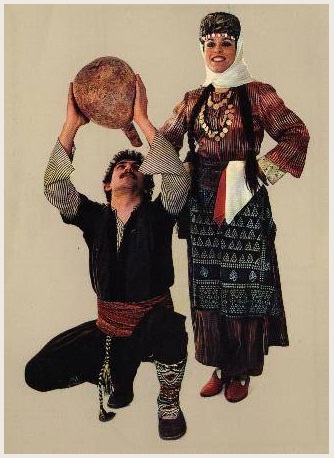
Some commonly used Costume parts in the Halay region:
Village Socks: This is, one of the most common hand crafts of Anatolia. They are made in all corners of the land and each region can be recognized by the special motives attributed only to them. As a matter of fact these elaborate socks are named according to the type of pattern of the motive on them. They are made out of wool for the winter and of cotton for the summer.
Yazma: This is the head scarf used by all women in all the rural areas. Just like the socks, they are an ancient art from of the Turks. What distinguishes one yazma from the other is not really the material, but rather the “oya” sewn around the edges. Long winter nights are the times for many hours of careful knitting of “oya”. “oya” is such a significant hand-
Kese: These are little bags, usually tied down from one's sash, used for variety of purposes. They can be made out of leather or cloth. They were mostly used to carry money, tobacco or men's watches.
Guvercin Oyunu: This Elazig dance is one of the animal imitation dances. The, name translates as the Dance of the Pigeon.
Pigeons, as well as in many other parts of eastern Turkey, are in Elazığ too are known as holy animals. This is due to the commonly known story that when Prophet Mohammed was running away from his enemies, with a few of his men, had hidden in a cave (Hira). A spider instantly formed a web and then a pigeon laid an egg just in 'front of the cave, leading the searchers to think that' no 'One could have recently been in the cave and Mohammed's life was Saved.
Not only in Elazig, but in many other areas of Turkey it is possible to see dances by the same name.
HORON REGION:
HORON: Ordu, Ciresun, Rize, Artvin, Trabzon provices.
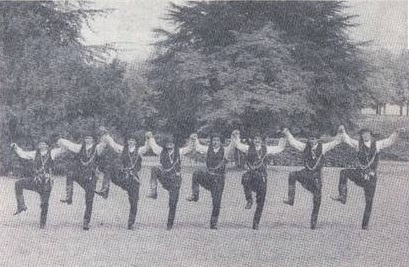
The two main regions under this category are Artvin and Trabzon. Both regions dances are characterized with the sharp footwork that the dancers-
A famous dance from Artvin is called Atabari, meaning the dance of Ataturk father of Turks, the founder of the modern Turkish Republic, in which the lyrics are
Bahcesi var bagi var
(It has gardens, it has a vineyards)
Ayvasi var nari var
(It has quince, it has pomegranate)
Ata'mizdan yadigar
(A souvenjr from our Ataturk)
Bizde Ata bari var.
(We have the Ata Dance.)
When a dance group from Artvin, during a festival of the Balkan countries in Istanbul, before Ataturk , demonstrates this dance in 1937. Ataturk became so enthesuastic that he got up and did the dance with the group. And ever since then the dance, which was originally called Artvin Bari has been called Atabari. The types of musical instruments used for Artvin dances are mostly the accordion, tulum (the bagpipe), and the drums. In Trabzon region, the instruments used for Horon dance are zurna, drum and kemence.
Zurna : This indispensable accompaniment of the davul ( big, double-
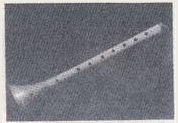
Zurna
Kemence : This is the instrument of the Black Sea region and is used in no other region. The origins of both the kemence and the kabak kemane is the old, central Asian Turkish instrument, the iklig.
Iklig was brought out of central Asia by Gokturks and was further expanded into the Azerbaijan and Anatolian areas by the Seljuk Turks.
Kemence has only three strings, and its bow is the horse hair. The horse hair is normally very loose, but is tightened by the player during playing, often tightened and released, allowing loudness or softness of the sound.
Horon dances of Black Sea are often performed to cura zurna. However especially indoors, kemaenche is a must. Total length of this instrument is about 20 inches.
BAR REGION
Erzurum, Kars, Ağrı, Artvin, Gümüşhane, Bayburt, Erzincan provinces.
AZERI REGION
Parts of Kars, Gole, Ani, Igdir provinces.
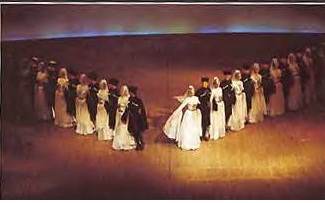
Azerbaijani music is characterized by liberal melodic embellishment and improvisational passages. Both indigenous folk instruments such as the, saz, zurna and Western instruments such as the accordion and clarinet are used.
The Azerbaijani women's costume consists of a full floor-
About the Author:
Ercument Kilic was born in Ankara, Turkey in 1958.
He began his dance and music career at an age of four and was eventually admitted, as culture specialist/ artist, to the Turkish National Ensemble with which he remained until coming to the U.S. in 1977.
Since that time, Ercument has given lectures on Turkish Culture for dance companies and universities in various countries as he traveled extensively numerous times to Canada, Great Britain, West Germany, Netherlands, Turkey, Switzerland, Republic of China, Hong Kong, Singapore, Japan as well as all 50 states in the U.S.